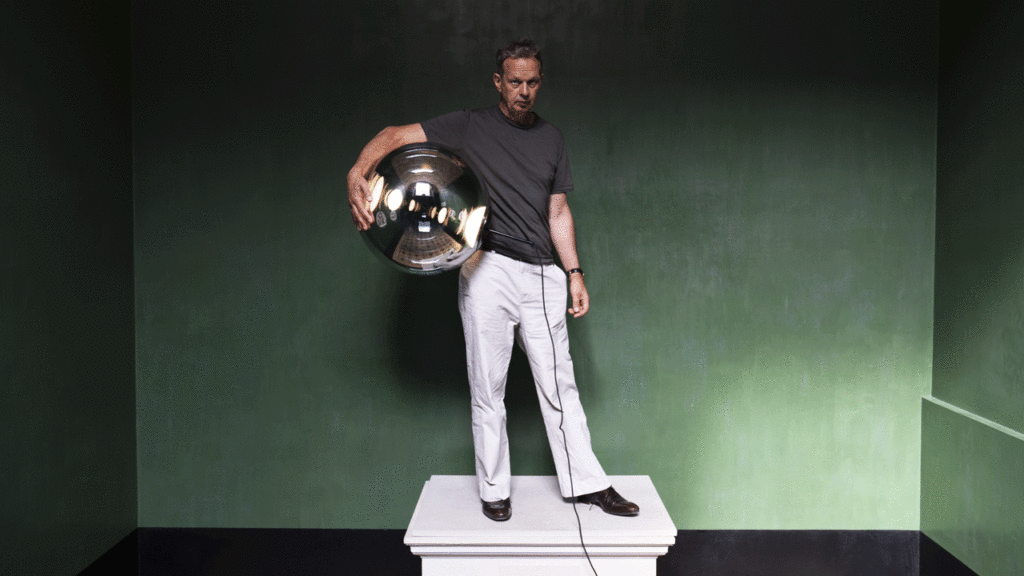Tom Dixon is not your typical designer. He doesn’t even always call himself one. “I’m more of a design entrepreneur, maybe,” he says with a casual shrug in a recent interview with Homecrux. A design entrepreneur sounds like a fitting description for a man whose career has defied convention. After all, design was hardly on top of the mind for this Tunisian-born, London-raised boy who spent his youth playing music and riding motorcycles.
He was more interested in music and joined a punk band called Funkapolitan as a bass guitarist. But it was these music days that were steeped in the raw energy of disco and punk and taught him that creativity thrives on collaboration. “Being in a band, seven sweaty boys in a van, was like a sports team,” Dixon says. “It gave me the courage to express myself and build a business.”
In the 1980s, while most designers were poring over textbooks or sketching in studios, Dixon was playing bass guitar in London’s underground music scene and motorcycling his way through life until he met with an accident and ended up breaking his arm. “We were about to go on tour, and my arm crashed,” he says. “That was the end of it, and that’s how I got into design,” he recalls. It was not the first time Dixon had had an accident. The first accident came at the age of 18 when he had been in art school for only six months. “I fell off and broke my leg,” he said. “And I never went back (referring to his art school), which as it turned out was a good thing, I think,” he chuckles.
A series of broken bones and torn muscles became Tom’s calling to the world of design. “I learned how to weld because I loved old motorcycles and cars,” he recalls. “I started messing around with scrap metal, making things for fun, and people bought them.” This serendipitous start, born of curiosity rather than formal training, set the tone for a career that’s been as much about attitude as aptitude.
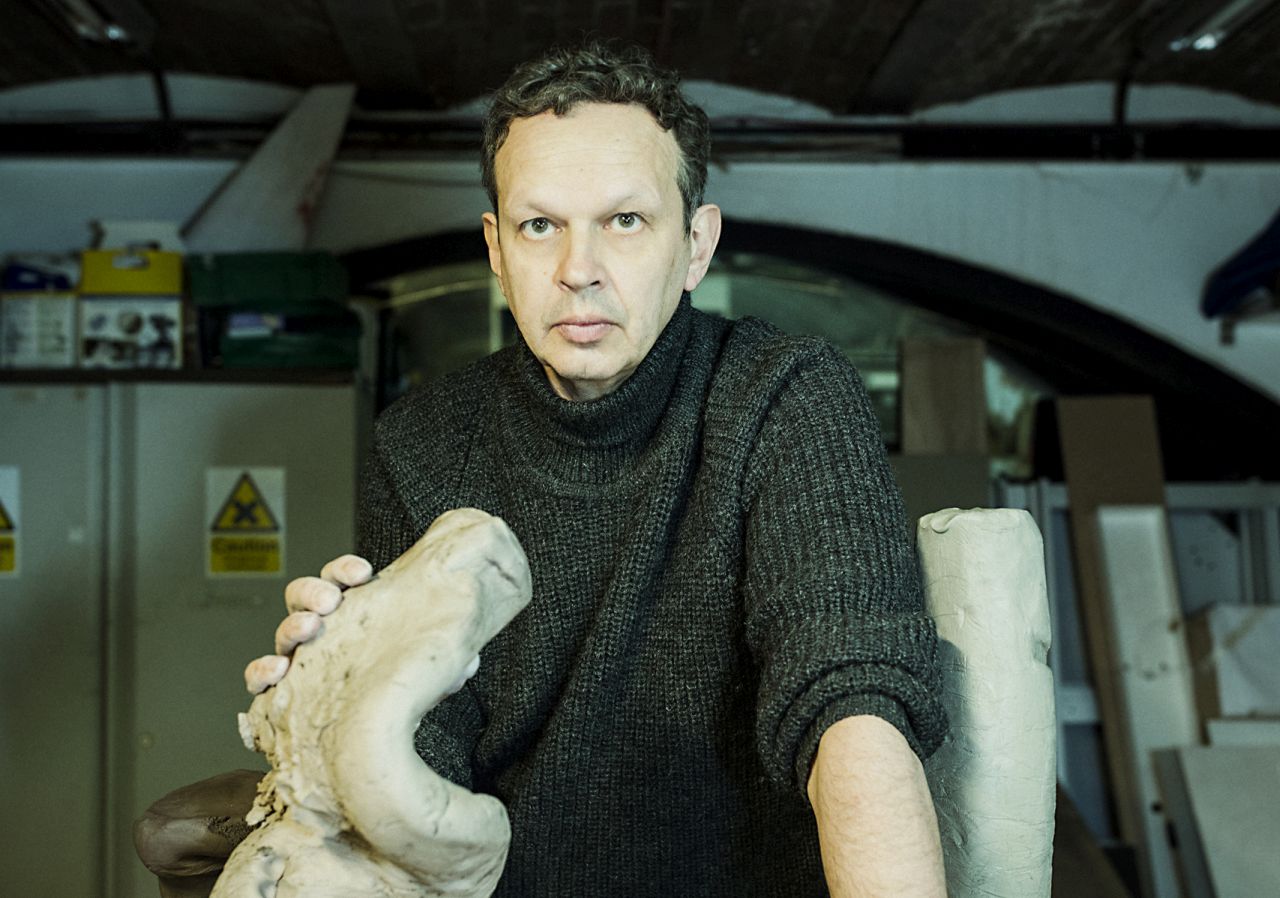
Having taught himself to weld while recovering from a motorcycle accident, he subsequently peddled his first designs of industrial scrap-turned-furniture. “Being involved in music, I was surrounded by creatives with businesses, fashion designers, music producers, photographers, and hairdressers, who needed window displays, props, or objects for pop videos, and I would often design for them,” he mentions.
That DIY spirit carried over into design, where he bypassed the ivory towers of academia for a hands-on approach. He’s less concerned about the self-taught label than with the freedom it gave him to experiment. “I didn’t know design history when I started,” he admits. “My influences were sculptors like Brancusi and Noguchi, not designers. The music industry had trained me to be self-propelled. I had to do everything myself, create my own tunes, find places to play, promote my own gigs, and make posters. It was all about self-production, so making and selling furniture was a direct extension of that experience,” he says.
Unlike many designers who view commerce with disdain, Dixon sees it as integral to his process. “People giving me their money was why I became a designer,” he says bluntly. Starting with a small studio and no budget, he learned early that selling one piece funded the next. This direct relationship with buyers, through galleries, shops, and now his own brand, keeps his work grounded. “Every sale feels personal,” he says. Despite that, “I know my limitations,” he admits. “I’m not great at money or sales, so I collaborate with people better than me,” Dixon hints at having Henry Jones as CEO of Tom Dixon Studio.
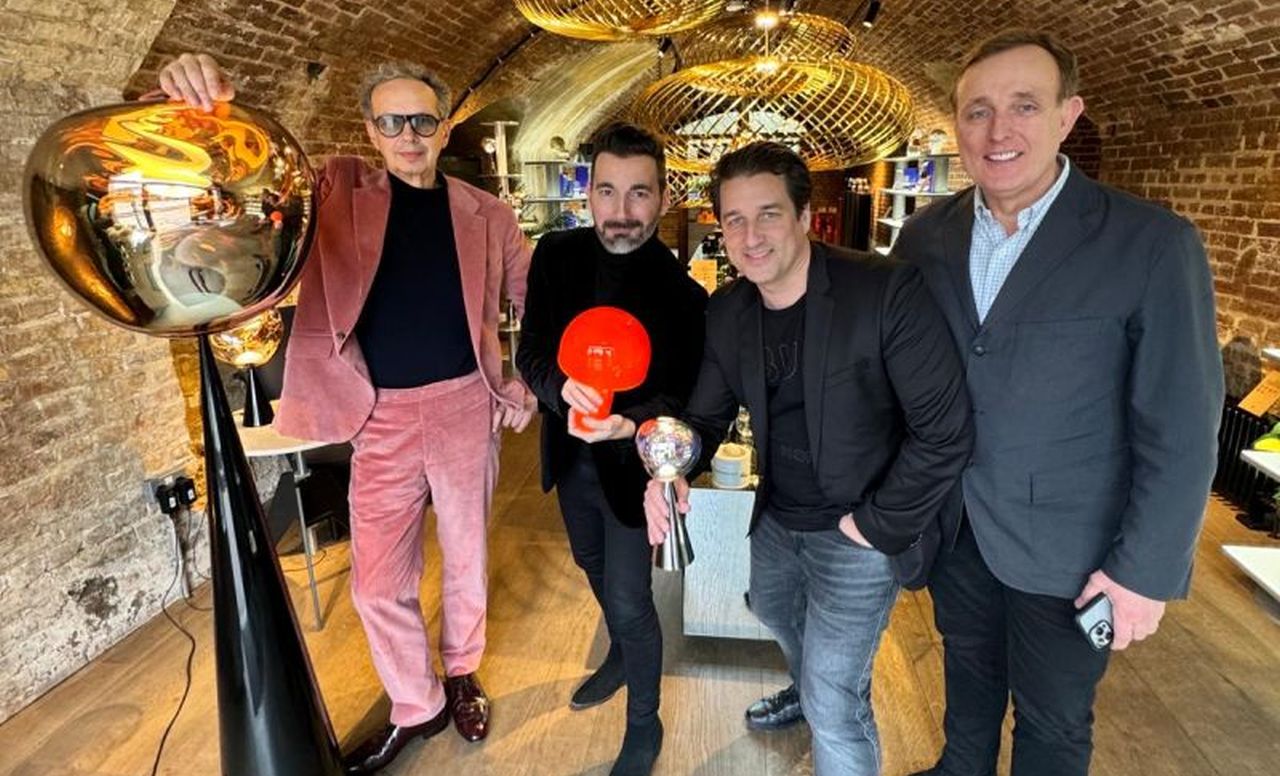
This humility allows him to focus on what he does best: creating objects that blend form and function. His designs, like the sinuous S-Chair or the molten-inspired Melt lighting, have become icons, not because they chase trends, but anticipate them.
At 66, Dixon shows no signs of slowing down. His day still starts early, at 6 a.m., when he slips into his London studio for a moment of calm before the chaos. “I like being in before anyone else,” he says, sipping coffee from the studio’s professional machine. “The space, complete with a restaurant and workshop, is less a showroom and more like a home for Tom. “Food brings life,” he says. Dixon prefers more of Italian business lunches over the Anglo-Saxon “sandwich-at-the-keyboard” approach. Then he stays late, prototyping in the workshop or sketching on his computer, fueled by curiosity and powered by coffee.
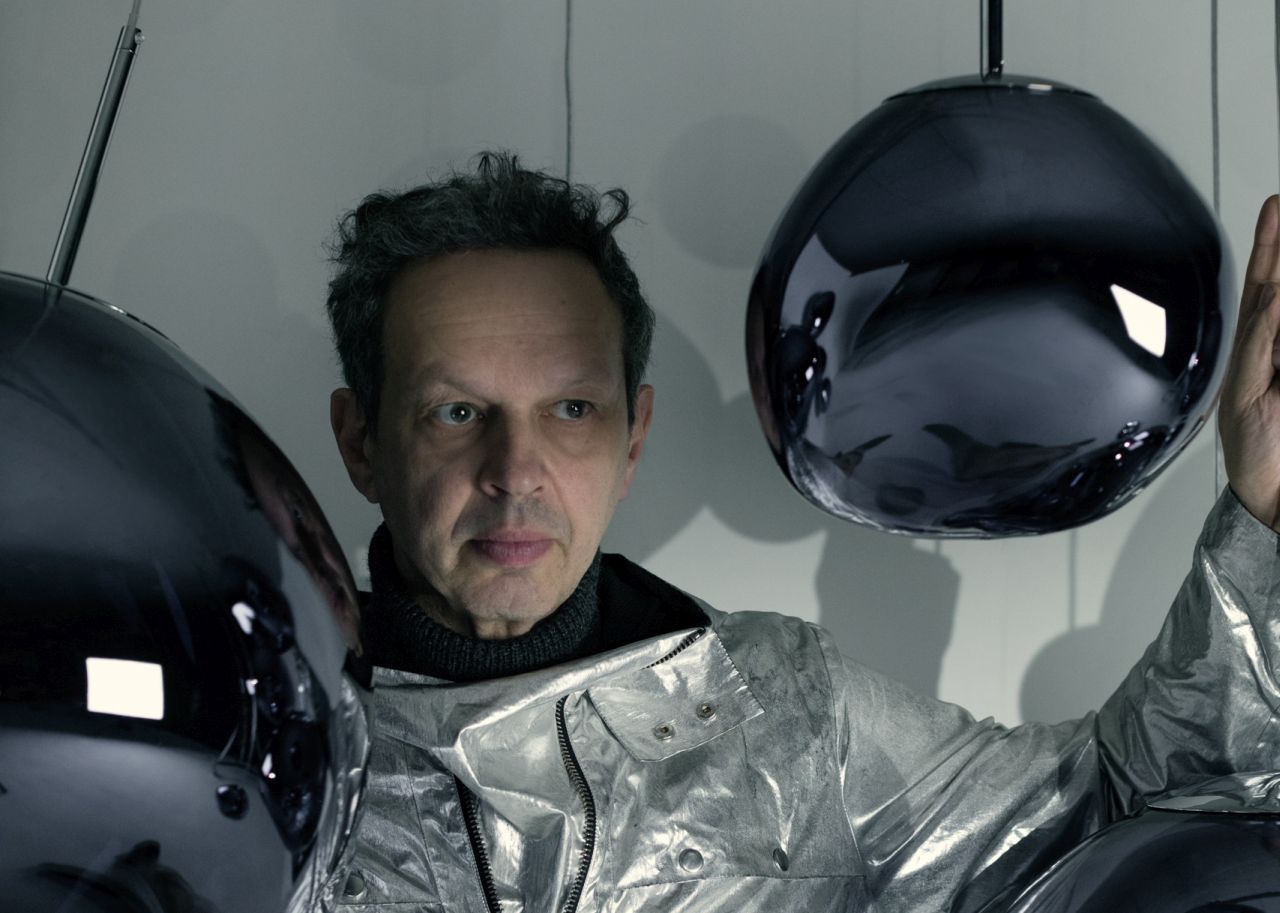
When not in the studio, you can find him at design fairs across the globe. Dixon’s recent trip to Copenhagen’s 3 Days of Design underscores his knack for staying ahead of the curve. “Denmark’s very design-aware,” he notes. “It’s become a hotspot.” This has led Dixon to unveil THE SHOP, his pop–up microstore in Copenhagen. The temporary, optimally sized city–centre microstore reflects the brand’s ongoing international expansion. “Identical boutiques are opening in New York, Sydney, and Taipei over the next three months,” he confirms. “The shop will feature AW25 lighting novelties, including SOFT, WHIRL, and POSE, a preview of the SS26 collection, featuring Jack, an addition to their portable lighting collection, and the latest decorative accessories,” a representative of his studio confirms.
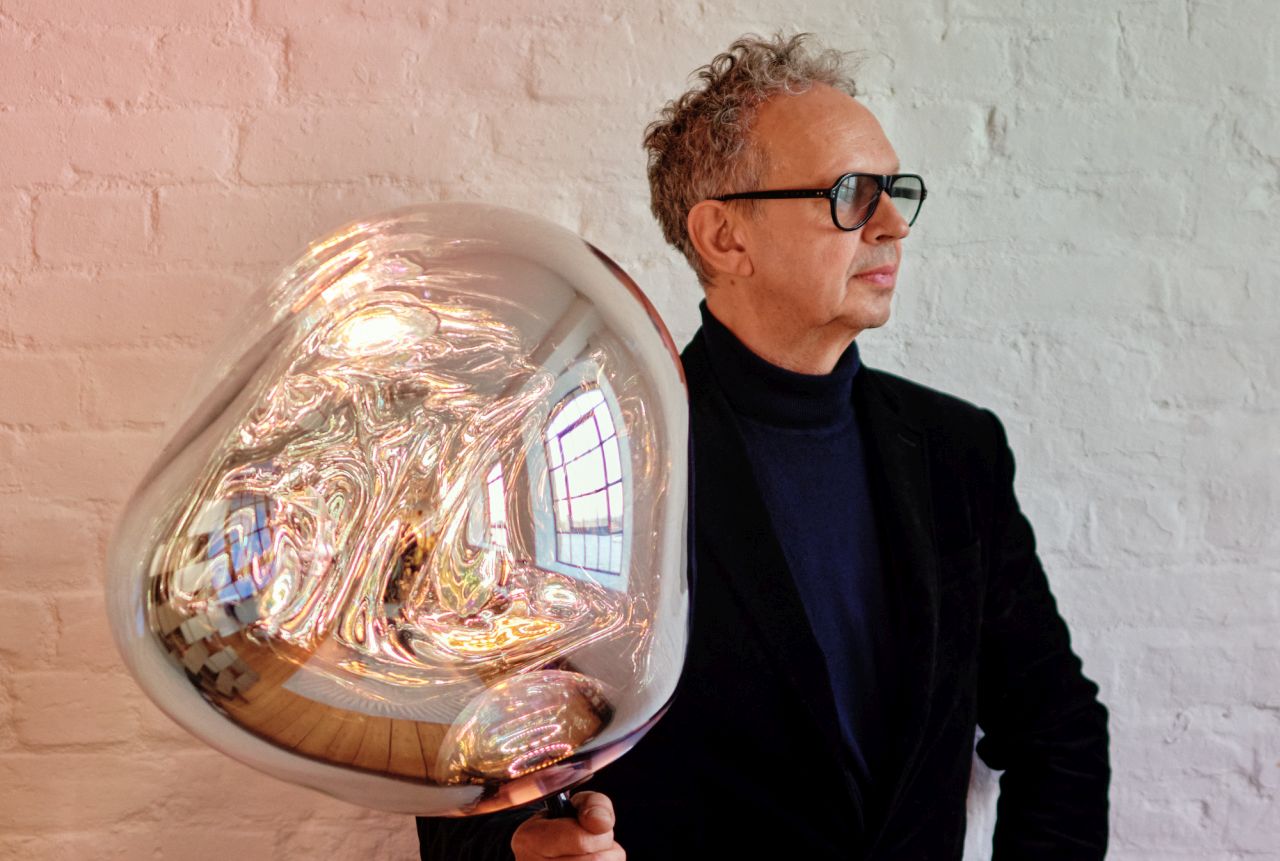
Dixon has seen the design world evolve over his 35-year career, from the decorative arts of the pre-Bauhaus era to today’s tech-driven landscape. “Design’s job is to knit aesthetics, functionality, and communication into a cohesive whole,” he says. His word makes sense, especially in a world rattled by wars and catastrophes.
For Dixon, design isn’t just about making beautiful objects, “it’s about solving problems and telling stories.” His inspirations are eclectic, rooted in art and architecture rather than design dogma. Sculptors like Barbara Hepworth and designers like Ettore Sottsass, whom he met later in his career, shaped his approach. “I didn’t work like most designers. I came at it sideways, through making and experimenting,” he says.
Currently, Tom Dixon Studio is operating globally, it is selling in 90 countries, and sourcing from factories across continents. Yet he remains grounded, driven by the same curiosity that led him to weld scrap metal decades ago. The London Design Festival looms on the horizon, where he’s sure to make waves again. “It’s been a privilege,” he says, zooming off with a smile.
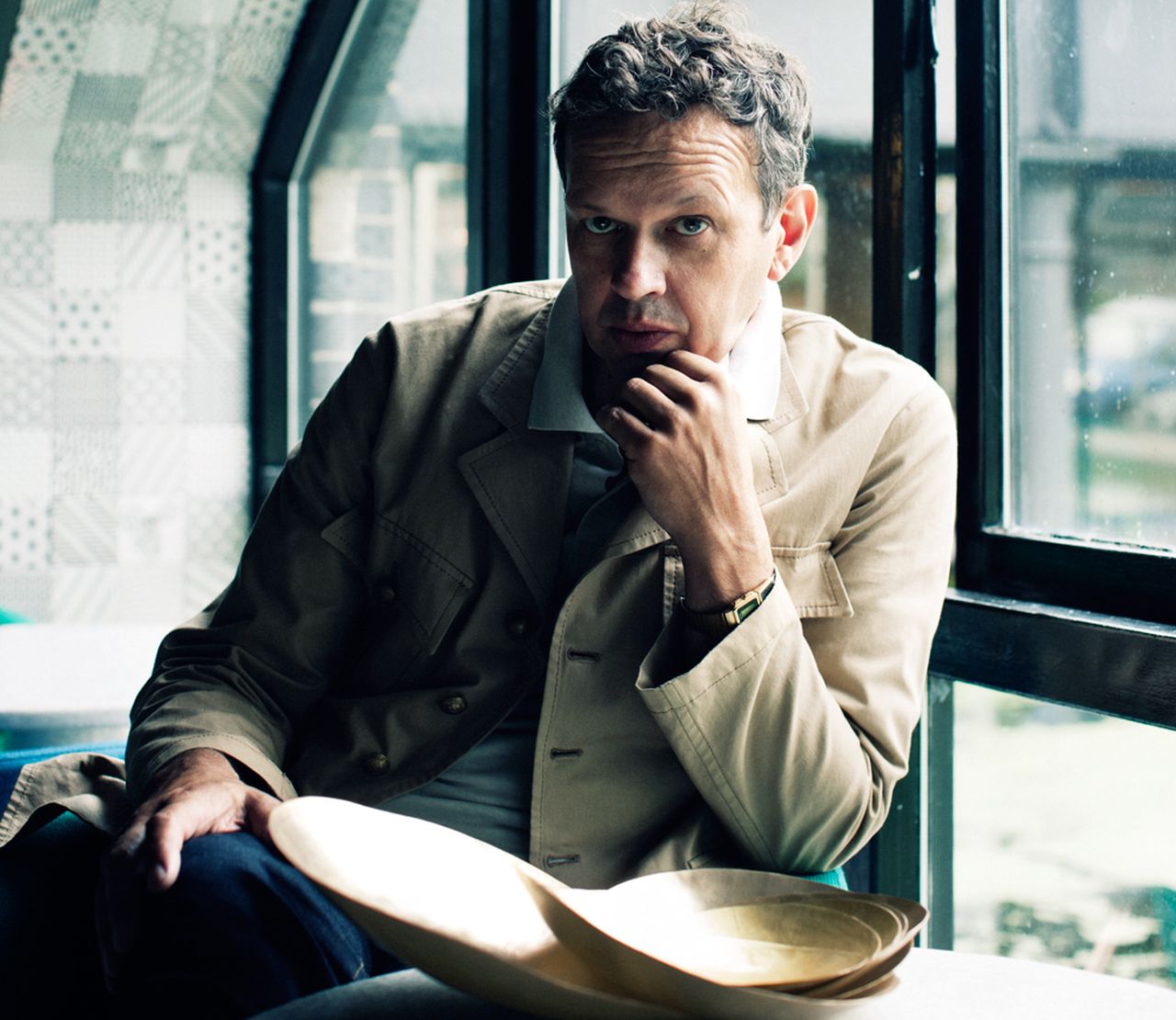
Follow Homecrux on Google News!
